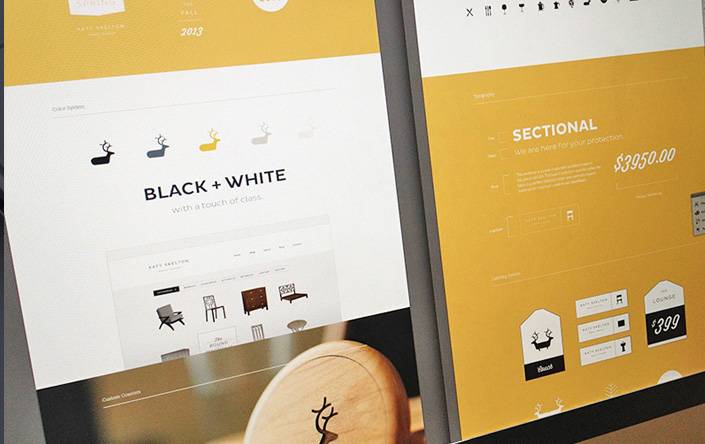Does you brand look warm and friendly or does it appear cold and unappealing?
When visitors walk into your store or click on your homepage are they greeted with a real person or simply a stock image?
When visitors walk through your isles or click through your pages do they feel like they matter or that they are just another number for a robot to count?
The bottom line is- humans relate to, connect with and trust other humans and are less likely to trust a brand without a human-touch behind it.
This is why creating a personable store front or website that consumers can trust and relate to is crucial. In fact, by restricting your business with stock images and the feeling of a cold, corporate environment you limit the potential for your audience to relate to and resonate with your brand.
Studies have also shown that brands that are more personable and offer more than just a ‘salesy’ environment, perform better and receive a stronger ROI in the long run.
If your webpage or brand is lacking that human feel, here are 7 things you can do to fix it:
1. Feature Your Staff
Forget the stock images and feature the real people who work at your company. Get creative and give your staff the opportunity to share a favourite quote, personality trait or something more about who they are other than their official title.
Showing the real people behind your everyday operations instantly helps to build trust and a connection between potential customers. In fact, studies have also found that companies who showcase their staff tend to keep clients longer and have a friendlier and more personable tone during business transactions.
In this day and age where everything is done online and over email, putting a face to a name is a great way to humanise your brand and your business.
2. Make your Employees Your Followers and Promoters
Part of creating a great brand starts with creating a great office environment that makes your employees proud of where they work. Once you have established this, you can then turn your employees into brand promoters and have them help promote your company’s vision and message.
To do this, send out releases or emails to your staff about different things they can promote on their social feeds. You may also want to enlist some employee guidelines of how you want your brand to be promoted.
3. Get out into the Community
Depending on the size of your company you may need to hire a Community Manager or team to help you build and join local events in order to promote your brand.
If you are a local run business, finding ways to get involved in community projects and events that are important to the neighbourhood is a great way to build relations and to put a face to the name of your brand.
If you mostly run an online business, building an online community is also included here. This can be done through a social media account, a catchy hashtag or even through hosting webinars.
Either way, getting your brand out into the public as much as possible is a great way to offer people a chance to get to know what you stand for.
4. Personalise Automated Marketing
Personalising your emails, thank you pages and other automated marketing tools is a great way to provide more of a human touch. Using direct language such as “you” rather than “we” is also a great way to make users feel as if they are really valued and are not just receiving some stock email or memo.
Studies have also found that when you add personal names to emails, users are more likely to stay engaged and click through on the call to action.
5. Freebies, Thank You’s and Welcomes
Everyone loves a good freebie, but if you can’t afford to send out free items to all your prospective or new clients then sending a thank you, welcome or happy birthday email or card can be just as good.
Studies have found that companies that take the time to do small gestures like this are more likely to have repeat orders, loyal customers and a stronger social media following.
6. Bring Some Personality to It
Your brand must have a distinct voice and style that helps to capture audiences attention and allows them to relate to your brand.
The reasons for this is obvious, but sometimes brands can get so caught up in technical jargon that they forget who they are really trying to market to.
As Corey Eridon of HubSpot states-
“Business and industry specific jargon is just another way of talking over people’s heads, and although you think you may sound super smart and important, you are really just coming off as inaccessible.”
7. Share Failures, Triumphs and Life Lessons
This is not about airing out your dirty laundry, it’s about connecting with your audience on a deeper level.
Studies have proven that people relate far more with brands who share their stories of failure as this makes them appear more human.
It seems odd, but by showing how your business failed in the past or mistakes that your brand has made, instantly makes people pay attention and feel sympathetic.
This is not about getting hugs of sympathy however, this is more about showing how your brand has risen up from failure and turned it into something positive. While all your stories don’t have to have a happy ending, they should show that your brand learnt something valuable and life changing.
A relatable brand is a profitable one, how are you going to make your brand more relatable?

Hey!
It looks like you're browsing in . Would you like to switch over to the website?